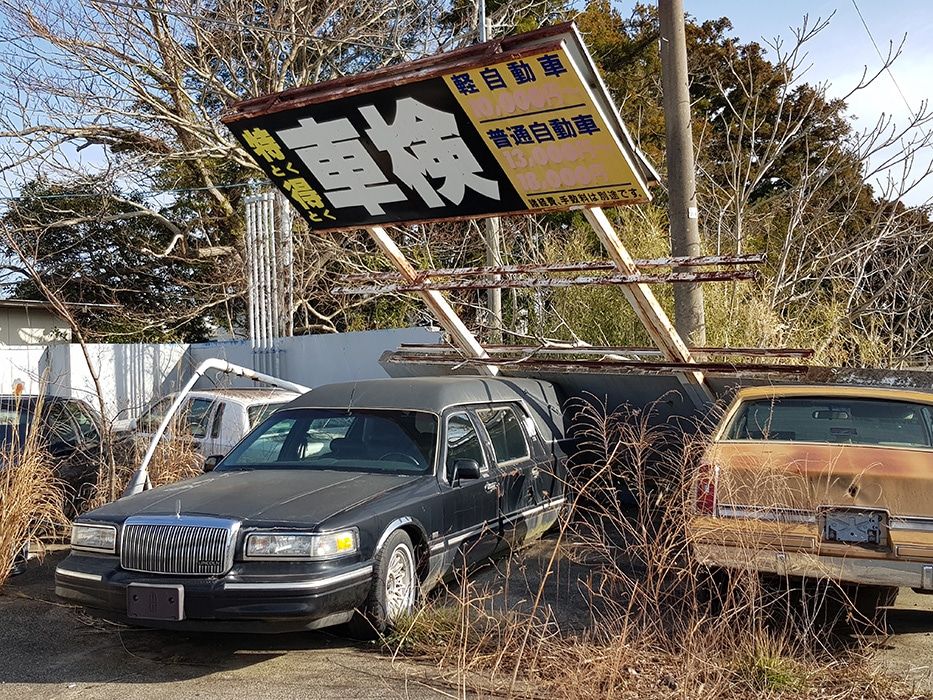Remember Fukushima: The accident is not over
By Tatsujiro Suzuki | March 11, 2021
 Radioactive cars, including a hearse, abandoned in the town of Namie, not far from the epicenter of the Fukushima disaster. Image courtesy of Thomas A. Bass
Radioactive cars, including a hearse, abandoned in the town of Namie, not far from the epicenter of the Fukushima disaster. Image courtesy of Thomas A. Bass
Editor’s note: This article is part of a collection of expert commentary on nuclear safety published on the tenth anniversary of the Fukushima disaster, produced in a collaboration between the Project on Managing the Atom at Harvard Kennedy School and the Bulletin.
On February 13, 2021, an earthquake of magnitude 7.3 struck again from the offshore of Fukushima prefecture. It reminded many people in Japan of the Tohoku Great Earthquake, which happened on March 11, 2011, and of the Fukushima Dai-ichi nuclear accident. Tokyo Electric Power Co (TEPCO), which manages the Fukushima site, reported on February 19 that it found a drop in water levels in Units 1 and 3, which suggests that there could be damage to the containment vessels of those reactors due to the 2021 earthquake. So far, no serious consequences have been reported, but if the situation deteriorates, there could be radioactive release from the site again.
TEPCO also reported that the machinery for treating radioactive water from the Fukushima side—more specifically, multi-nuclide removal equipment (ALPS) sample tanks—and tanks holding water that has been treated were displaced a maximum of 19 centimeters by the earthquake. This incident illustrated the difficulties of managing the contaminated water that has been accumulating on site. Although releasing the water into the sea is technically considered a best option, the fact that contaminated water contains highly radioactive materials makes this operation difficult. In August 2018, it was found that some treated water still contained radioactive materials beyond the regulatory standards. Local fishermen, worrying about the possible impact on their fishing business, strongly opposed the plan to release the water containing tritium into the sea.
There is no consensus on what to do with the water even now.
Last year, the government announced that residents can return to hometowns where the average radiation level is below 20 milliSieverts per year, which is still much higher than the normal regulatory standard of one milliSievert. About 36,000 people are still away from home, and the number of people returned to their hometowns ranges from a mere 8.6 percent to 84.5 percent, as of March 2020. Reconstruction of life in Fukushima is still not completed.
The safety culture of Japan’s nuclear industry may also be eroding again. TEPCO reported in February 2021 that in September 2020 there was an illegal entry by an employee into the control room of Kashiwazaki-Kariwa nuclear power plant. Fuketa Toyoshi, chair of Japan’s Nuclear Regulation Authority (NRA), criticized TEPCO, saying that “it shows that the staff are not educated, and the high awareness of security is not widespread.”
Finally, lost public trust has not been recovered yet. Despite the establishment of an independent nuclear regulator and much tougher regulatory standards, only 21.6 percent of the Japanese public believes that it is possible to secure safety of nuclear power plants. Only 12.3 percent of the public support either maintaining or expanding nuclear power, and 60.6 percent support either a phaseout of nuclear power or the immediate shutdown of all nuclear reactors. Yet the government and the nuclear industry have hardly changed their attitudes towards nuclear power. On December 25, 2020 the Ministry of Economy, Trade and Industry released a report detailing Tokyo’s “Green Growth Strategy” for achieving carbon neutrality by 2050, which includes nuclear power as a “growth sector.” It seems that government and nuclear industry may have forgotten the accident.
It is our responsibility to remember what happened and face the legacies of the accident.
The accident is not over yet.
Read more expert commentaries in this collection »
Together, we make the world safer.
The Bulletin elevates expert voices above the noise. But as an independent nonprofit organization, our operations depend on the support of readers like you. Help us continue to deliver quality journalism that holds leaders accountable. Your support of our work at any level is important. In return, we promise our coverage will be understandable, influential, vigilant, solution-oriented, and fair-minded. Together we can make a difference.
Keywords: Fukushima, Fukushima Daiichi, Fukushima disaster, Tepco, commentary, fukushima10, nuclear energy, nuclear power
Topics: Nuclear Energy
















The nuclear industry is busy trying to rebrand itself as clean energy.
But the whole nuclear fuel chain is CO2 intensive and no energy source should be considered clean when it creates a waste product that will be toxic and dangerous for thousands of years.
Plus nuclear power plants release radioactive gases and effluents on a routine operational basis. This industry hides behind the acronym “ALARA”.
It’s time to STOP the nuke con job!